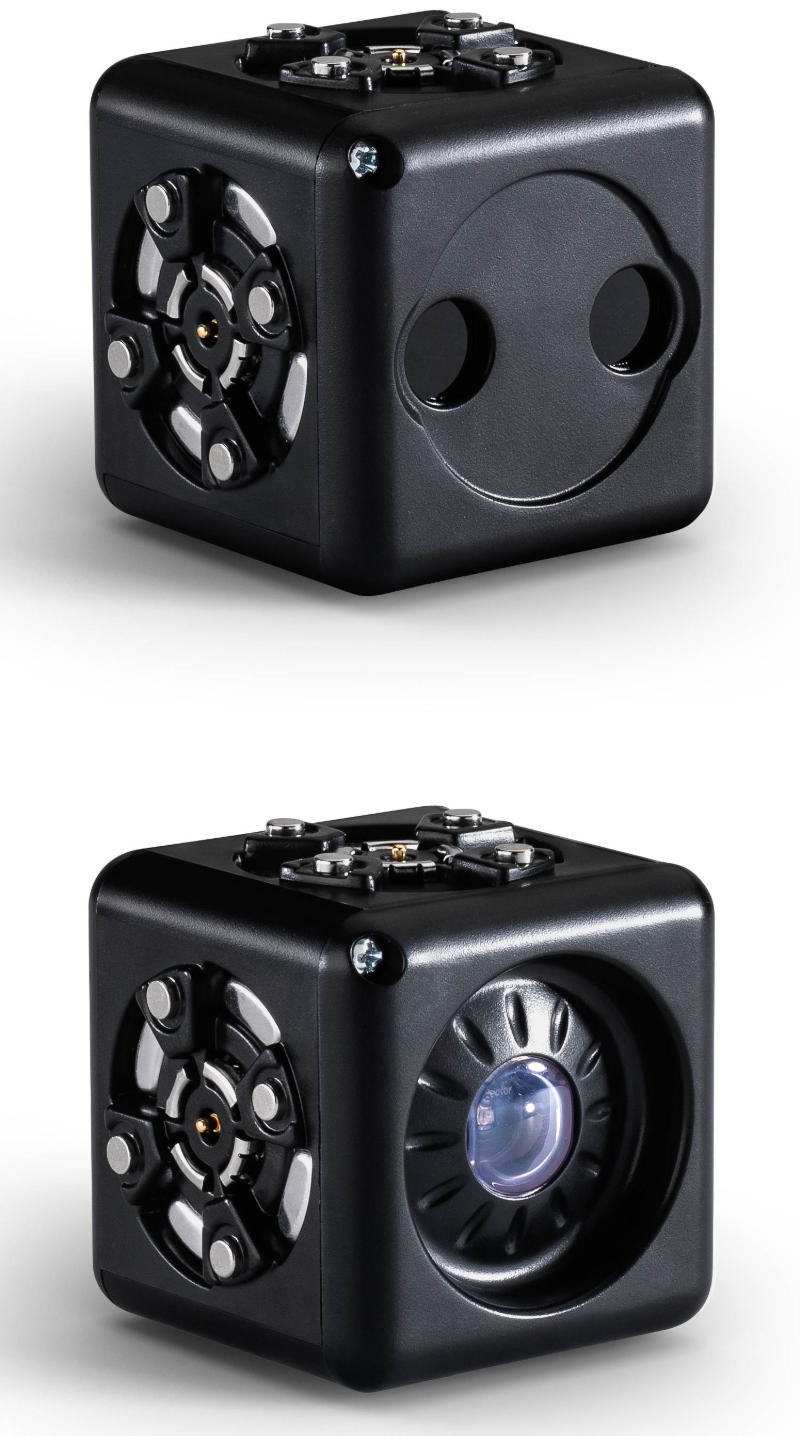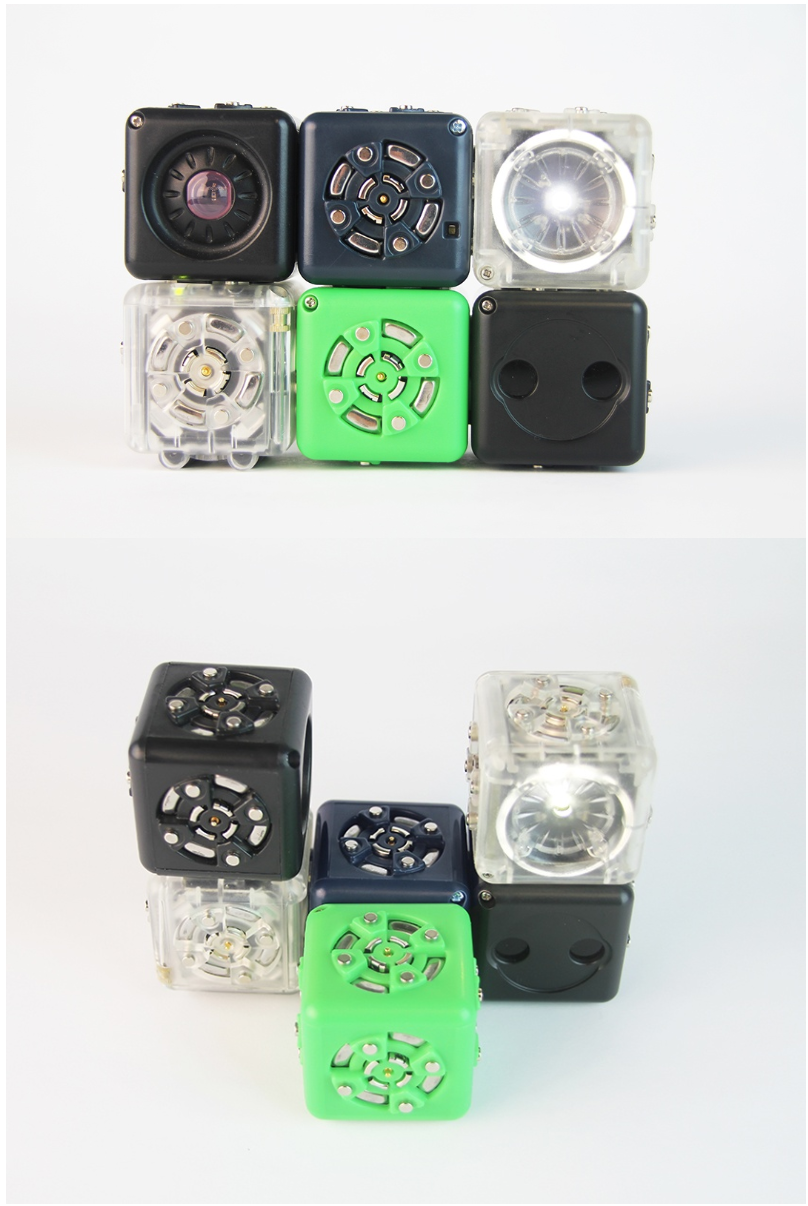Lesson Modules
Teaching Tips:
This is a continuation of Robot and Sensing, Part I. This class activity can be used as a longer unit, or as a second day of students progressing in their understanding of robots, robotics components, and relationships between sensing and acting using Cubelets.
For each class/group, this lesson plan includes 2 parts:
Each segment is suggested to last 20 minutes for a total of 40 minutes of class time.
- An extension of the previous class using Cubelets to consider sensing and sensory information
- A Cubelets wrap‐up challenge
Each segment is suggested to last for 20 minutes, with two segments comprising a 40-minute class. Where a class period affords less than 40 minutes, we suggest increasing the time for each segment and using Part 1 as a single class and Part 2 as a single class activity the next day.
While these lesson plans have suggested age levels, it is also possible to use the younger grade activities as a ramp up to older grades; e.g. use the 4-8-year-old activities to ramp up and extend a lesson plan for a group of 9-year-old students. Similarly, the activities suggested for older students can become a way to expand on challenges presented to younger learners, if there are time and interest.
Remind each group about senses and sensory input
Tell the class: “Last class, we thought about sensing, robot senses, and our senses. What did we learn about what the robot was sensing? How was that sense the same as humans sensing things? How was it different? What other senses would it be useful for robots to have? In Cubelets, all the black Cubes are sensing Cubes.
Yesterday’s black Cubelet was sensing distance. Today, let’s try a new black Cubelet and see what it is sensing."

Reminder about senses and sensory input
Last class, we thought about sensing, and robot senses, and our senses.
In our last class, the black Cubelet was sensing distance. Today, let’s try a new black Cubelet and see what it is sensing.
Teaching Tips:
Have the students use the Battery, Brightness, and Flashlight, and work to discover what the new Sense does. (Students can be prompted to try objects other than their hands to make the light go off and on. Sometimes it is helpful to prompt them to try their robot with lights off or in a dark place.) “Now that you know what it is sensing (Brightness) can you work to make the light shine more or less. “ (Prompt students to try more or less light going into the photosensor in the Brightness Cubelet.) “What helps change the amount of response? What predicts how much light the robot will give off? “
This is an opportunity to understand more about robot sensing. and detecting change or input magnitude in sensory information.
Use the Battery, Brightness, and Flashlight and work to discover what the new sensor does. Now that you know what it is sensing (Brightness) can you work to make the light shine more or less?
- Heat
- Light
- Distance
/IMG_1506.jpg)
Teaching Tips:
Materials: KT06 kits, groups of 14 students using each kit. For group builds, separate into 3 piles of Action (clear), Sense (black), and Think (green, passives)
This is an opportunity for students to add more excitement to their small robots while also relating robots receiving more than one set of input to themselves receiving more than one set of inputs.
Have students work in their group and add both Sense Cubelets. “Now, what happens when the robot is sensing more than one thing? Let’s add both senses! “ Next, have them add both Action Cubelets. Now have them modify their robot so that they can control the robot moving so that it moves from one side of the desk/table to the other.
This is an opportunity to add more excitement to their small robots while also relating robots receiving more than one set of input to themselves receiving more than one set of inputs.
Sit in a circle and do this as your group build.
- Now, what happens when the robot is sensing more than one thing? Let’s add both senses!
- What happened when you had more than one response in our Simon Says game? Did you sometimes have to do both things at once?

Teaching Tips:
At this point, take some student volunteers (or groups) ask them to explain how their robot works and their reasoning behind what their choices.
Don’t worry, this isn’t for a grade, it’s just so your teacher can check the classes’ understanding

